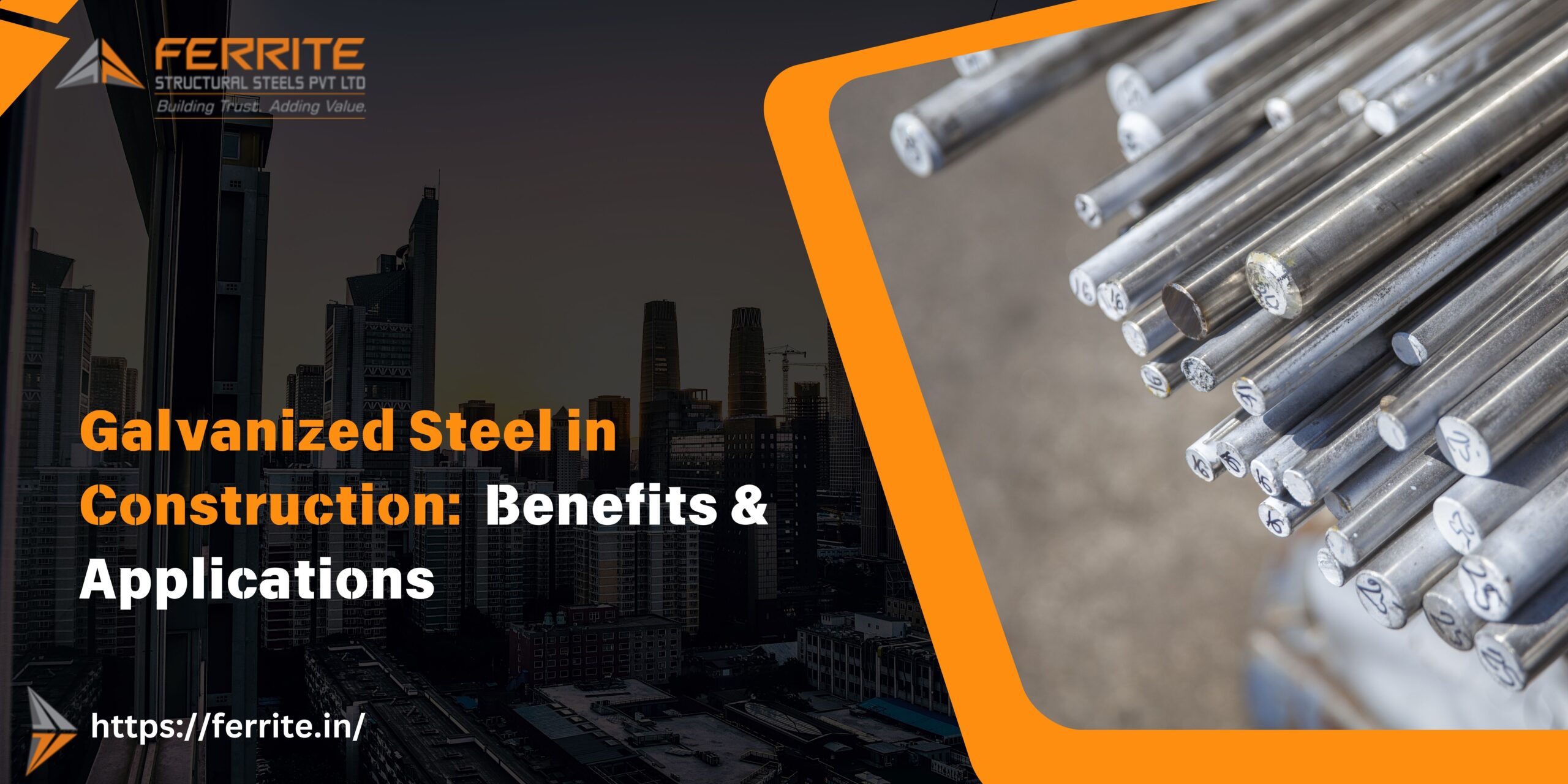Galvanized steel in construction has become an essential material due to its exceptional durability, corrosion resistance, and cost-effectiveness. The process of galvanization, which involves coating steel with a protective layer of zinc, enhances its lifespan and ensures structural integrity even in the harshest environments. This blog explores the benefits of galvanized steel, its applications in the construction industry, and why it remains the preferred choice for engineers and architects worldwide.
What is Galvanized Steel? & Benefits of Galvanized Steel in Construction
Galvanized steel is steel that has been coated with a protective zinc layer to prevent rust and corrosion. The most common method used for this process is hot-dip galvanization, where steel is submerged in molten zinc, creating a strong, durable coating. Other methods include electro-galvanization and thermal diffusion, each offering specific advantages based on the required application.
1. Superior Corrosion Resistance
One of the primary benefits of galvanized steel in construction is its exceptional resistance to corrosion. The zinc coating acts as a barrier between the steel and environmental elements such as moisture, oxygen, and chemicals. This makes galvanized steel ideal for structures exposed to harsh weather conditions, humidity, and industrial pollutants.
2. Longevity and Durability
Galvanized steel provides a significantly longer lifespan compared to untreated steel. Depending on environmental conditions, galvanized steel structures can last anywhere from 50 to 100 years without requiring major repairs or maintenance. This makes it a cost-effective choice for long-term construction projects.
3. Low Maintenance and Cost-Effectiveness
Unlike other materials that require regular painting or coatings to prevent rust, galvanized steel is virtually maintenance-free. Once installed, it does not require frequent touch-ups or replacements, reducing long-term costs associated with maintenance and repairs. This cost-efficiency makes it a preferred material for large-scale infrastructure projects.
4. High Strength and Structural Integrity
Steel is known for its high strength, and galvanization further enhances its ability to withstand extreme loads and environmental stresses. This makes it suitable for high-rise buildings, bridges, and other structural applications where durability is critical.
5. Eco-Friendly and Sustainable Choice
Galvanized steel is 100% recyclable, making it an environmentally friendly option. The zinc coating does not harm the environment, and the steel itself can be repurposed without losing its quality. Additionally, the long lifespan of galvanized steel reduces the need for frequent material replacements, contributing to sustainability efforts in the construction industry.
Applications of Galvanized Steel in Construction
1. Structural Frameworks
Galvanized steel is widely used in the structural framework of buildings, including beams, columns, and supports. Its ability to withstand high loads and resist corrosion makes it an ideal choice for both residential and commercial construction.
2. Roofing and Cladding
Due to its durability and weather resistance, galvanized steel is extensively used for roofing and wall cladding. It provides excellent protection against rain, snow, and UV radiation, ensuring long-lasting performance.
3. Bridges and Highway Infrastructure
Bridges and highway structures are constantly exposed to moisture, pollutants, and temperature fluctuations. Using galvanized steel in these applications prevents rust formation, reducing maintenance costs and extending the lifespan of the structures.
4. Industrial and Agricultural Buildings
Warehouses, factories, and agricultural storage facilities rely on galvanized steel for their frameworks, panels, and reinforcements. Its resistance to moisture and chemicals ensures that these structures remain sturdy for decades.
5. Water and Wastewater Treatment Plants
Galvanized steel is commonly used in water tanks, pipelines, and wastewater treatment facilities. Its corrosion-resistant properties make it ideal for environments where prolonged exposure to water and chemicals is a concern.
6. Fencing, Railings, and Street Furniture
Galvanized steel is a popular choice for outdoor applications such as fencing, guardrails, and street furniture. Its ability to withstand harsh weather conditions and prevent rust ensures long-term durability.
Why Use Galvanized Steel in Construction?
1. Proven Performance in Harsh Conditions
Galvanized steel has been tested and proven to withstand extreme environmental conditions, including coastal areas with high humidity and industrial zones with heavy pollution. This reliability makes it the material of choice for critical infrastructure projects.
2. Faster and More Efficient Construction
Since galvanized steel does not require additional coatings or protective treatments before installation, it speeds up the construction process. Pre-galvanized components arrive at the site ready for assembly, reducing labor and project completion time.
3. Aesthetically Pleasing Finish
Galvanized steel offers a smooth, uniform, and metallic finish that enhances the aesthetics of modern architectural designs. It can be left as-is or painted for added customization.
4. High Return on Investment (ROI)
While the initial cost of galvanized steel may be slightly higher than untreated steel, its long-term benefits, including reduced maintenance and extended lifespan, result in significant cost savings. Investors and project managers prefer galvanized steel for its excellent return on investment.
5. Compliance with Safety and Quality Standards
Galvanized steel meets international safety and quality standards, making it a trusted material for construction projects worldwide. It is widely accepted in building codes and regulations, ensuring compliance with industry requirements.
Conclusion
Galvanized steel in construction offers a combination of durability, strength, and cost-efficiency, making it an indispensable material for modern infrastructure. Its superior corrosion resistance, long lifespan, and minimal maintenance requirements make it the preferred choice for architects, engineers, and builders. From structural frameworks to bridges, roofing, and industrial applications, the benefits of galvanized steel ensure the safety and longevity of buildings and infrastructure projects. By choosing galvanized steel, construction professionals can achieve sustainable and high-performance results, reinforcing the importance of this versatile material in the industry.







